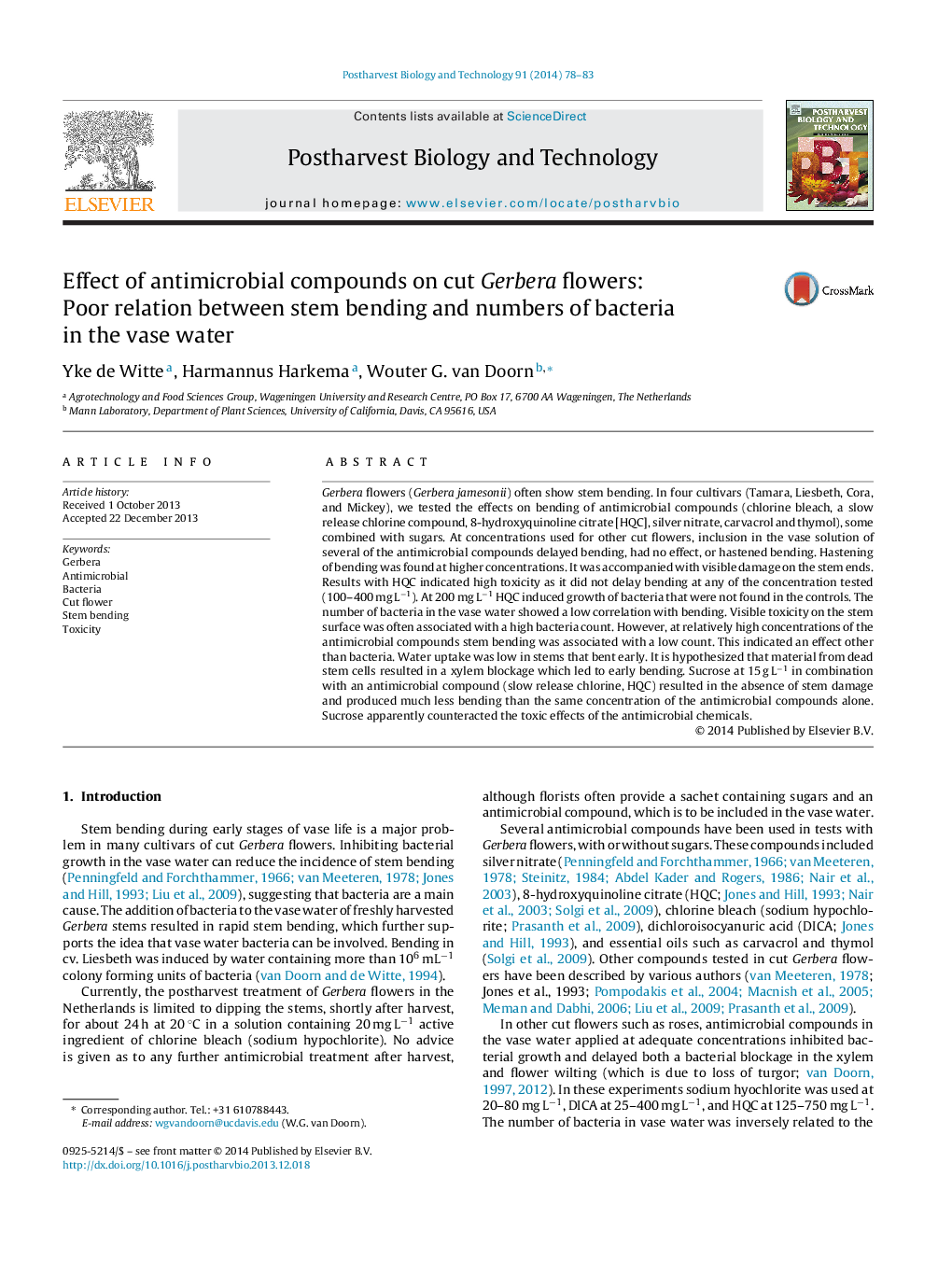| کد مقاله | کد نشریه | سال انتشار | مقاله انگلیسی | نسخه تمام متن |
|---|---|---|---|---|
| 4518195 | 1625003 | 2014 | 6 صفحه PDF | دانلود رایگان |
• Stem bending in Gerbera flowers was not delayed or hastened by relatively high concentrations of some antimicrobial compounds.
• Lack of a positive effect of the compounds on bending was accompanied by visible damage on the stem ends.
• This toxicity was alleviated by addition of sucrose.
• The data suggested an effect other than bacteria, probably due to material from dead stem cells that induced xylem blockage.
Gerbera flowers (Gerbera jamesonii) often show stem bending. In four cultivars (Tamara, Liesbeth, Cora, and Mickey), we tested the effects on bending of antimicrobial compounds (chlorine bleach, a slow release chlorine compound, 8-hydroxyquinoline citrate [HQC], silver nitrate, carvacrol and thymol), some combined with sugars. At concentrations used for other cut flowers, inclusion in the vase solution of several of the antimicrobial compounds delayed bending, had no effect, or hastened bending. Hastening of bending was found at higher concentrations. It was accompanied with visible damage on the stem ends. Results with HQC indicated high toxicity as it did not delay bending at any of the concentration tested (100–400 mg L−1). At 200 mg L−1 HQC induced growth of bacteria that were not found in the controls. The number of bacteria in the vase water showed a low correlation with bending. Visible toxicity on the stem surface was often associated with a high bacteria count. However, at relatively high concentrations of the antimicrobial compounds stem bending was associated with a low count. This indicated an effect other than bacteria. Water uptake was low in stems that bent early. It is hypothesized that material from dead stem cells resulted in a xylem blockage which led to early bending. Sucrose at 15 g L−1 in combination with an antimicrobial compound (slow release chlorine, HQC) resulted in the absence of stem damage and produced much less bending than the same concentration of the antimicrobial compounds alone. Sucrose apparently counteracted the toxic effects of the antimicrobial chemicals.
Journal: Postharvest Biology and Technology - Volume 91, May 2014, Pages 78–83
